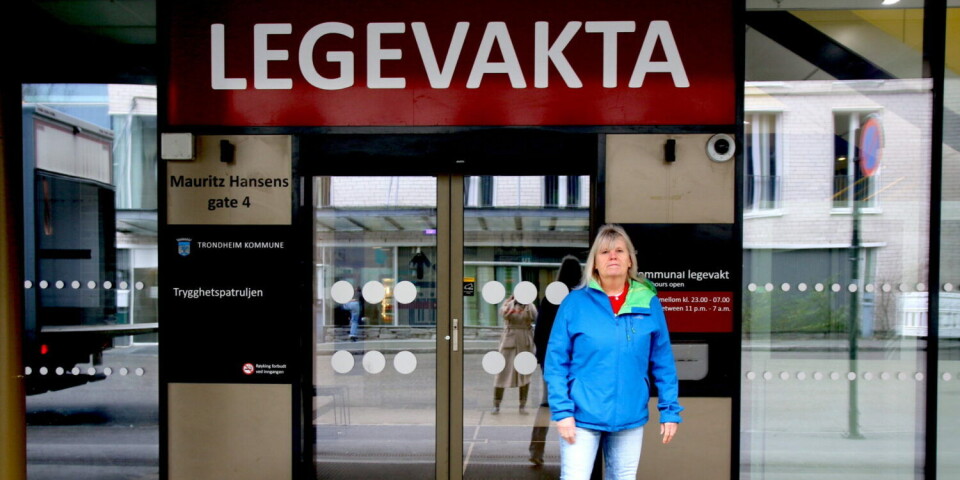THIS CONTENT IS BROUGHT TO YOU BY NTNU Norwegian University of Science and Technology - read more
Stressed parents increase the risk of self-harm in adolescents
One in ten Norwegian adolescents has engaged in deliberate self-harm without the intention of dying from it.

For the first time, researchers have taken an in-depth look at the correlation between stressed parents and self-harm in adolescents.
“The most common form of self-harming is cutting,” says Lars Wichstrøm, professor of psychology at NTNU.
In collaboration with Tove Wichstrøm, an associate professor at NTNU and specialist psychiatric nurse, he has recently published a new study on self-harm.
The study shows that the risk of adolescents self-harming increases if they experience their parents yelling, being negative, or hostile towards them from an early age.
Self-harm means intentionally harming oneself without the intent to commit suicide.
Cutting, head-banging, and branding
The study also shows that there are five times as many girls who self-harm compared to boys. In most cases, parents are unaware that their children are self-harming.
Self-harm in the form of cutting can involve scratching oneself with a sharp object or cutting the skin with a knife.
“Head-banging is also a form of self-harming,” says Wichstrøm.
This involves hitting one’s head against something like a table. Another common form of self-harm is branding oneself with a cigarette or a candle flame.
“Self-harming is an attempt to cope with an unbearable situation. Enduring physical pain feels more manageable than emotional pain. Self-harming is a sign of deep despair,” says Tove Wichstrøm.

Interviewed with hand puppets
In the study, researchers followed 759 children from the age of four through adolescence. When the children were six years old, they were asked how they perceived interactions with their parents.
A method developed at the University of California, Berkeley was used to interview children at this young age. The interviewer uses hand puppets to act out different situations that the child may or may not relate to.
One puppet might say, ‘My mum is often angry with me,’ while the other says, ‘My mum is almost never angry with me, what about your mum?’ or ‘My dad yells at me when he's angry,’ and the other replies, ‘My dad doesn't yell at me when he's angry. What about your dad?’
The interview included a number of such scenarios, and the answers were scored based on how much the child agreed with one puppet or the other.

The same children were interviewed using a different, more age-appropriate interview method when they were 12, 14, and 16 years old.
The study shows that one in ten teenagers had engaged in deliberate self-harm without wanting to die, while three per cent had such persistent and frequent self-harm that it met the criteria for a self-harm disorder.
The parents were also interviewed when the children were six years old and when they reached adolescence.
Parental stress
“We don't know if something specific happened when the children were six years old, or if what the children described in the interview reflects a pattern of interaction that has continued over time,” says Tove Wichstrøm.
The researchers found that children who described their parents as negative and hostile had an increased risk of engaging in self-harm during adolescence.
“It's important to remember that this is the children’s perception of their parents, and not necessarily what actually happened,” says Lars Wichstrøm.
The researchers also found that children whose parents reported stress in their parenting role had an increased risk of engaging in self-harm during adolescence.
The study did not investigate general stress among the parents, but stress specifically related to the parenting role.
“It may involve stress related to lack of time, many new responsibilities, the child’s needs affecting the parents’ relationship, the child not validating the person as a parent, or difficulties in establishing a good connection with the child. Some parents also find tidying up toys or dealing with other practical tasks stressful,” says Lars Wichstrøm.
A new phenomenon?
Both researchers highlight the importance of parents becoming aware of their own stress and negativity at an early stage, and how this affects the child and their relationship.
“As an adult, you naturally become more distant when you're caught up in your own stress, and it's harder to understand and respond to other people when you're agitated or tired. If you notice that your child is self-harming, it's important not to get angry or yell, but rather to be curious and inquisitive about what is causing them to feel so distressed,” says Tove Wichstrøm.
Lars Wichstrøm believes that self-harm as a solution to emotional pain is a relatively new phenomenon, and that it is something adolescents learn from each other through platforms like social media or blogs.
A study from the University of Oslo shows that self-harm among young people increased from 4 per cent in 2002 to 16 per cent in 2017.
“I’m fairly sure that it didn't exist many decades ago. Back then, people didn't think cutting yourself was something that could relieve difficult emotions. Before self-harming was described online or in popular culture, it was not necessarily something people would think of doing,” says Wichstrøm.
He believes it is important for adults to tell adolescents who are struggling that the pain can be managed by talking to someone, taking a step back from what is difficult, and learning how to regulate their emotions in different ways.
References:
Tørmoen et al. Change in prevalence of self-harm from 2002 to 2018 among Norwegian adolescents, European Journal of Public Health, vol. 30, 2020. DOI: 10.1093/eurpub/ckaa042
Wichstrøm, T. & Wichstrøm, L. Childhood Predictors of Nonsuicidal Self-Injury in Adolescence: A Birth Cohort Study, Journal of the American Academy of Child & Adolescent Psychiatry, vol. 63, 2024. DOI: 10.1016/j.jaac.2023.12.013
———
Read the Norwegian version of this article on forskning.no
More content from NTNU:
-
Why are pregnant women in Norway so worried?
-
Politics on Facebook: Populist parties choose divisive issues on purpose
-
Social media is connected to cyberbullying – but not how we thought
-
Forskere ved NTNU får nesten 24 millioner av EU for å lage nye strømomformere
-
This helps the youngest children enjoy school more
-
Can we tap the ocean’s power to capture carbon?





































